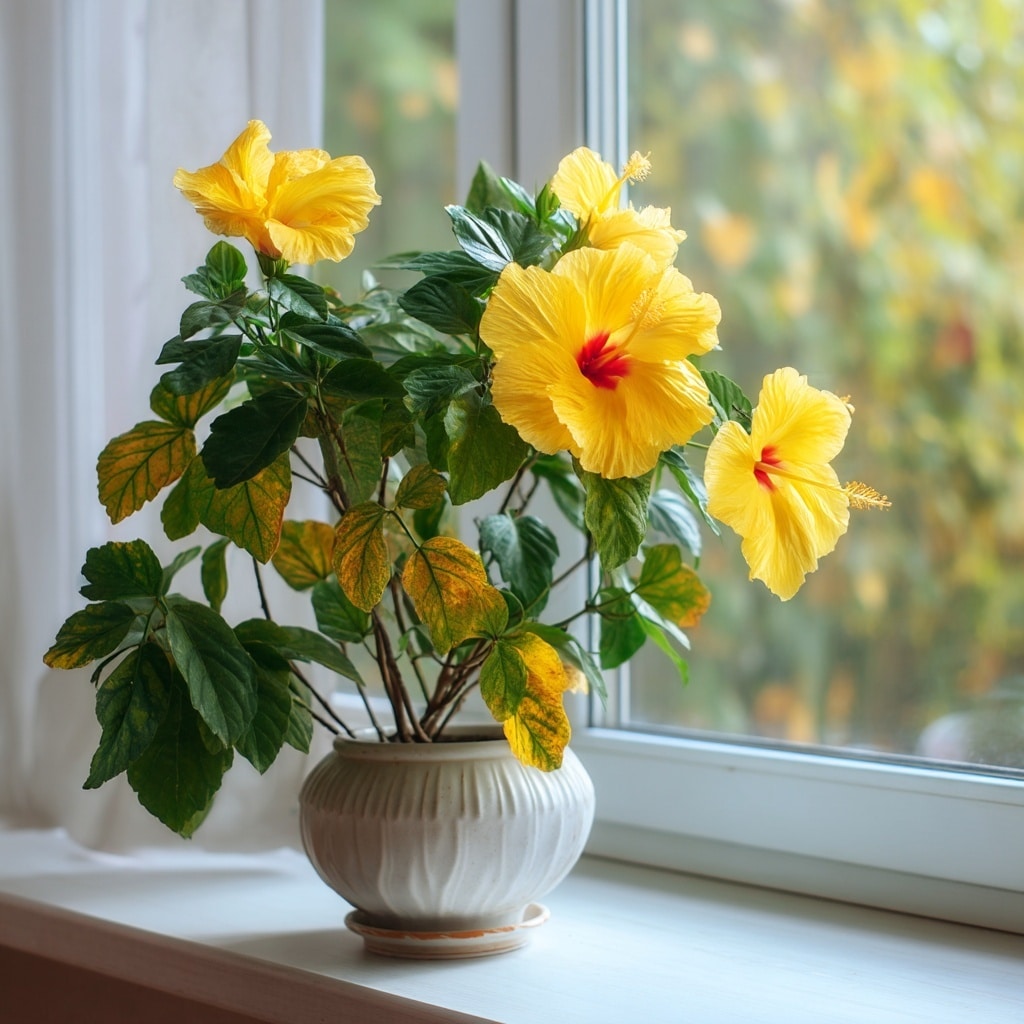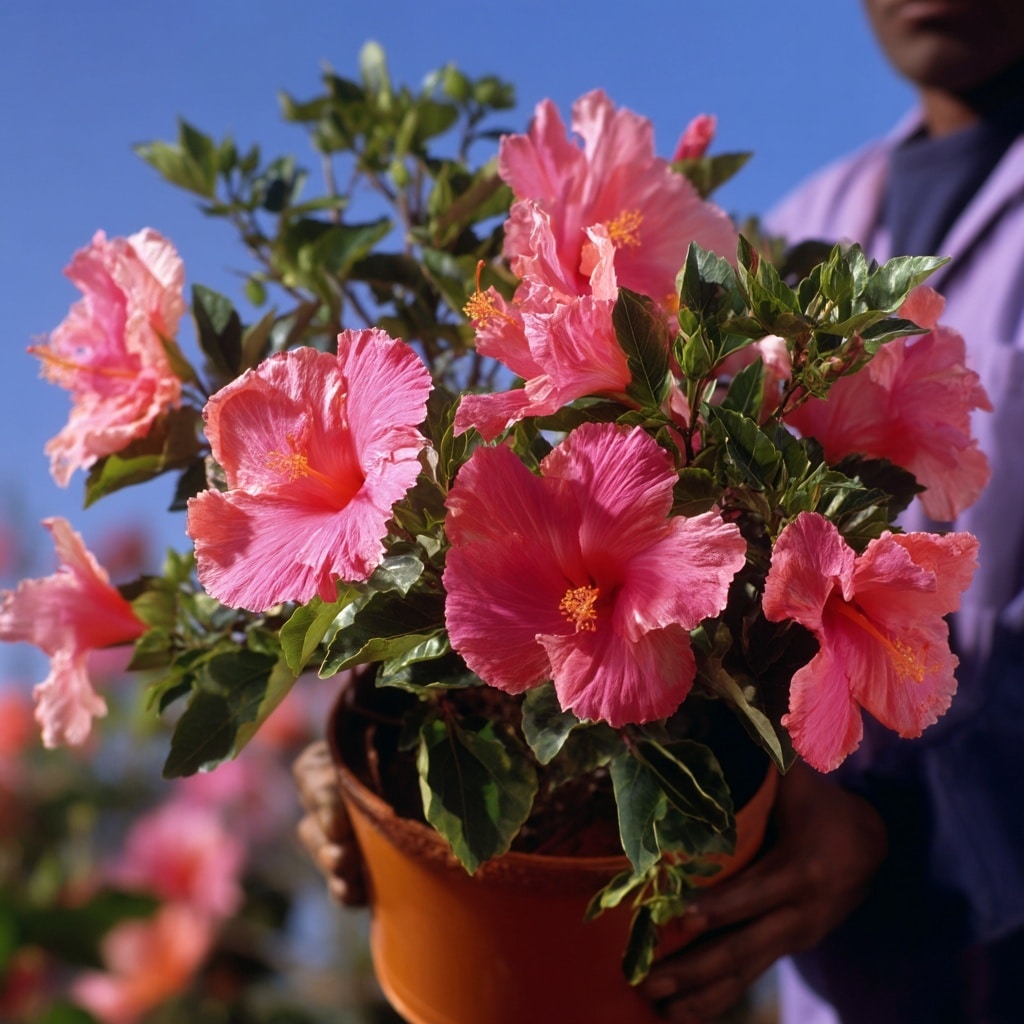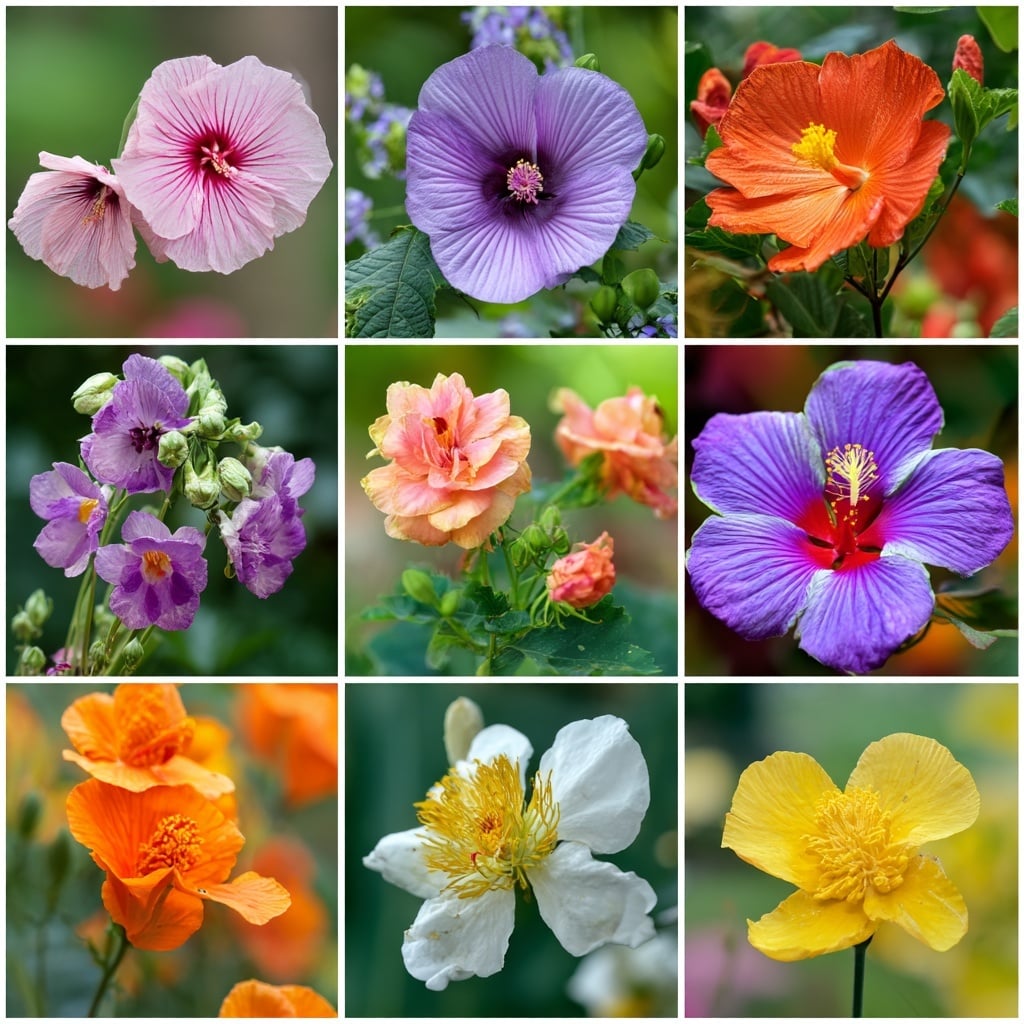Tropical Hibiscus is one of the most vibrant and rewarding flowering plants you can grow in a home or garden. Known for its bold, colorful blooms and lush green foliage, this stunning shrub (most commonly Hibiscus rosa-sinensis) brings a touch of the tropics wherever it’s grown. Although it’s not frost-hardy in colder zones, with the right seasonal care, tropical hibiscus can thrive both indoors and outdoors. Whether you’re growing it in a sun-drenched patio pot or nurturing it inside near a bright window, understanding its seasonal needs is key to keeping it healthy and flowering year-round.
Table of Contents
Summer Care for Tropical Hibiscus
When summer arrives, Tropical Hibiscus truly comes alive. Warm temperatures and longer daylight hours create the ideal environment for lush growth and frequent flowering. To help your plant thrive during this active growing season, here are the key care tips:
🌞 Sunlight Requirements
Tropical Hibiscus loves sunlight. Place your plant outdoors in full to partial sun, ideally receiving at least 6 hours of direct sunlight daily. The more light it gets, the better the blooms — but in extremely hot climates, a bit of afternoon shade can help prevent stress.
💧 Watering Wisely
These plants are thirsty during the summer, especially when they’re full of foliage and in a container. Check soil moisture often — water thoroughly when the top inch of soil feels dry, but avoid letting the plant wilt. Never let the soil fully dry out, as this can lead to bud drop or leaf loss.
🌿 Fertilizing for More Flowers
To keep your Tropical Hibiscus blooming all summer, feed it regularly with a balanced, water-soluble fertilizer. A high-phosphorus blend (like 10-30-10) encourages flowering. Organic fertilizers are also effective if applied consistently. Feed every 2–4 weeks during the growing season.
✂️ Pruning Tips
If your plant is getting leggy or oversized, summer is a good time for light pruning. Trim back branches to shape the plant or encourage bushier growth. Just keep in mind: pruning may temporarily reduce blooming, but it helps long-term plant health.
🐛 Common Summer Pests
Warm weather also brings pests. Be on the lookout for aphids, spider mites, whiteflies, and mealybugs. Start with non-toxic methods like spraying leaves with water or insecticidal soap. For serious infestations, systemic insecticides can be effective — but always use them with care, especially on blooming plants.
Fall & Winter Care for Tropical Hibiscus

As temperatures begin to drop, your Tropical Hibiscus will need extra attention to help it transition from an outdoor showstopper to a cozy indoor guest. Protecting it from cold damage and maintaining the right indoor environment are key to keeping it alive through the winter.
🏡 When to Bring It Indoors
Once nighttime temperatures start dipping below 50°F (10°C), it’s time to move your hibiscus indoors. Don’t wait until the first frost — sudden cold can shock the plant. If possible, gradually acclimate your plant by moving it to a shaded or covered area for a few days before bringing it inside.
🌤 Ideal Indoor Conditions
Place your hibiscus in the brightest spot available, like a south- or west-facing window. While it won’t bloom as prolifically indoors, strong light will help it retain leaves and stay healthier. Avoid drafty spots and keep temperatures above 60°F (15°C).
💦 Adjust Watering & Fertilizer
Growth slows during winter, so cut back on watering — but don’t let the soil dry out completely. Keep it slightly moist and never soggy. Most plants won’t need fertilizer during this time. If your plant continues to grow under strong light, a light feeding every 6–8 weeks can be beneficial, but don’t overdo it.
🐞 Indoor Pest Prevention
Bringing plants indoors can also bring uninvited pests. Watch for aphids, whiteflies, and spider mites — they thrive in warm, dry indoor air. Before moving your plant inside, inspect and rinse it thoroughly. Once indoors, monitor weekly and treat problems early with insecticidal soap or neem oil.
Spring Transition & Year-Round Indoor Tips

As winter ends and warmer days return, your Tropical Hibiscus will be ready to re-enter its active growth phase. With the right steps, you can ease it back into outdoor life — or keep it growing happily indoors, depending on your setup.
🔁 Moving Back Outside
Wait until all danger of frost has passed — typically well into May in cooler zones. Sudden cold snaps, wind, or heavy rain can shock the plant if reintroduced too early. Begin by placing it in a shaded, protected spot for a few days, then gradually move it to a sunnier location.
🌿 Resuming Fertilizer and Water
Start fertilizing again in mid to late spring, even before the plant moves outside. Once it’s back in full sun and actively growing, return to a regular feeding schedule every 2–4 weeks. Water needs will also increase as the plant starts putting out new leaves and blooms. Monitor soil moisture closely to avoid drought stress.
🌼 Keeping Hibiscus Indoors All Year
If outdoor growing isn’t practical, Tropical Hibiscus can live indoors year-round. It will need a very bright spot, like a south-facing window or under grow lights. While it may not bloom as often indoors, consistent care will keep it lush and healthy. In a greenhouse or sunroom, hibiscus may bloom continuously with minimal interruption.
📝 Key Tips for Year-Round Indoor Growth
- Rotate the plant weekly for even growth
- Avoid overwatering in lower light conditions
- Prune lightly to maintain shape and encourage fullness
- Clean leaves occasionally to remove dust and boost photosynthesis
With consistent attention, you can enjoy the beauty of hibiscus flowers — even in the dead of winter.
Other Plants Related to Tropical Hibiscus

While Tropical Hibiscus (Hibiscus rosa-sinensis) is the star of most warm-weather patios, there are a few other hibiscus species — and related plants — worth considering, especially if you’re looking to expand your indoor or seasonal garden.
🌺 Hibiscus acetosella
Also known as red-leaf hibiscus, this variety is admired for its deeply lobed, burgundy foliage. It can be grown similarly to tropical hibiscus, thriving outdoors in warm months and transitioning indoors before frost. However, its visual appeal drops a bit during winter, especially in lower-light conditions.
🌼 Hibiscus trionum
This fast-growing annual hibiscus features creamy white flowers with a dark center and does best outdoors in summer. It’s not ideal for indoor culture but is easy to regrow each year from seed, making it a fun addition to seasonal gardens.
🌸 Abutilon hybridum (Flowering Maple)
A cousin of hibiscus, Abutilon produces delicate, bell-shaped flowers and is often grown as a container plant. It can overwinter indoors, though its stems may become floppy and its blooming sporadic. Still, it’s a good candidate for bright sunrooms or greenhouses.
🌞 Anisodontea capensis
With a similar flower shape to hibiscus, this South African native is fast-growing and floriferous during warmer months. However, it makes a poor houseplant, often struggling in typical indoor environments. Unless you have a heated greenhouse, it may be best treated as a seasonal plant or annual.
Conclusion

Growing Tropical Hibiscus is a rewarding way to bring vibrant color and lush greenery into your garden or home. With the right care — warm sun, consistent watering, regular feeding, and seasonal adjustments — your plant can bloom beautifully year after year. Whether you’re placing it on a sunny patio in summer or keeping it cozy indoors during winter, a little attention goes a long way with this tropical beauty.
If you’re ready to expand your plant collection or explore more care guides, check out our other articles on houseplants, container gardening, and pest control for indoor plants to keep your green space thriving.





